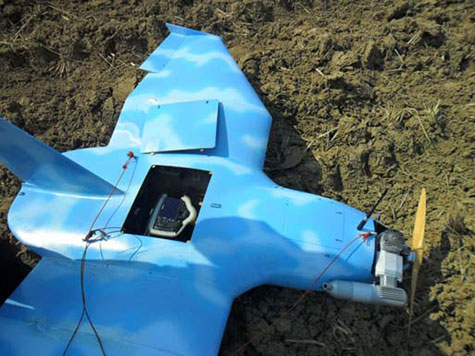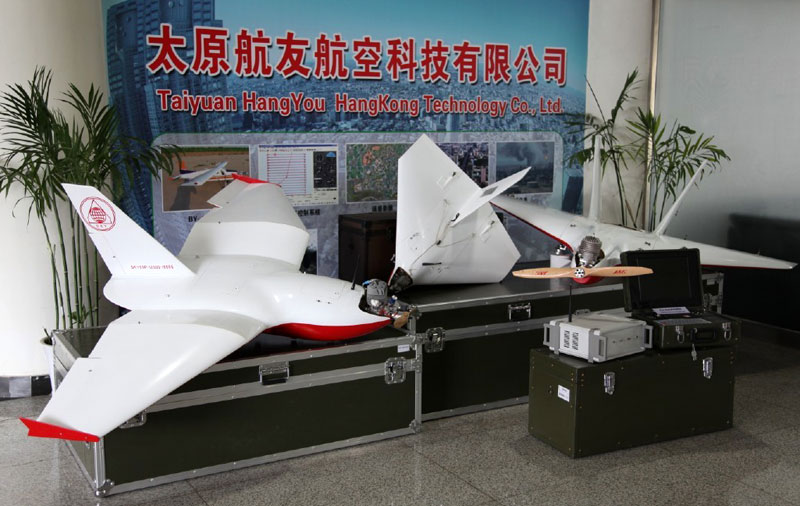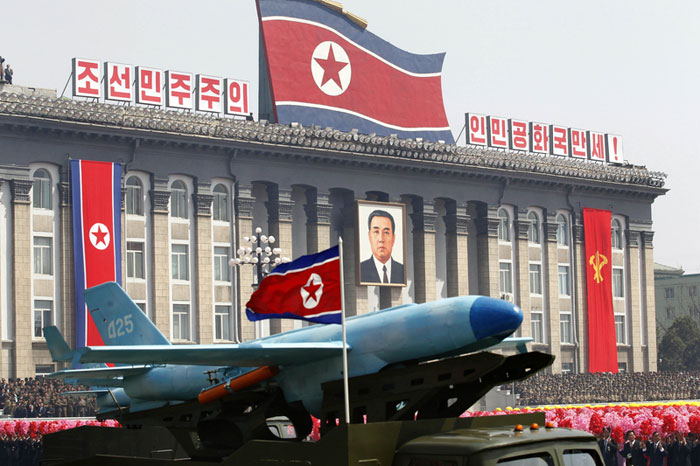
In the past week South Korea recovered two unidentified unmanned aerial vehicles (UAVs) believed to be North Korean spy drones that were not detected by the South’s radar surveillance network. Following this incident Seoul is likely to probe its aerial surveillance capabilities, particularly with counter-UAV performance in mind.

Alarmed by the incursions, Seoul stressed the urgent need to prepare more efficient countermeasures. According to Korean defense officials, the drones were on intelligence gathering missions but could be used on terror attack if adapted for such missions. The drones were likely on intelligence gathering missions, reflecting the intensive spying activities North Korea is directing at the South. In recent years the ‘Democratic’ Republic of Korea (DPRK) has invested significant efforts in the development of unmanned platforms, which include intelligence gathering and attack systems. Nevertheless, the level of sophistication demonstrated by the two captured drones is not as advanced as could be expected, as the two drones lack real-time communications or high resolution payloads expected from such platforms. The vulnerability of the South to North Korean drones was realized in 2010, during artillery barrages fired by the north, Back then, the North reconnoitered areas near Baeknyeong and Yeonpyeong Islands with a drone that flew undetected by radar and mostly invisible to the naked eye.
“The military is preparing measures to deal with unmanned aerial vehicles, including North Korea’s lightweight aircraft, to complement the air-defense operation system,” a source at the defense ministry in Seoul said. “The ministry will also consult with the related agencies to draw up measures to control civilian UAVs and the registration system,” he added. The presidential national security adviser Kim Jang-soo presided over an emergency meeting of the National Security Council to discuss how to beef up the country’s air defenses against such unmanned aircraft, sources said. The plan will call up measures to defend against such drones and other small aircraft that are hard to detect by radar and strengthen regulations on civilian drones. Following the North Korean drone incursions, the Defense Acquisition Program Administration (DAPA) said it is pushing to resume a troubled blimp development project, which has been delayed over technical problems.
This mini-UAV was found in October 2013 on the east coast area of South Korea, near the town of Samcheok. (Photo: South Korean Defence Ministry)
“DAPA will hold a meeting later this week to approve a plan to restart the surveillance airship project,” a DAPA official said. “Although front-line troops have spotted unmanned aerial vehicles believed to be sent by North Korea several times recently, the low-altitude radar recognizes them as birds,” an Army official said, commenting on the performance of existing TPS-830K low-level surveillance radar in service with the South Korean military. The military is considering purchasing advanced low-altitude surveillance radar to better monitor moving targets. The Demilitarized zone is located at a mountainous area north of the capital, which clutters the view of ground-based radars, particularly at low altitudes, where small drones are operating. The Air Force has placed Gap Filler radar systems with a range of about 100 km in the front, but even these are not fully covering the area. Seoul had also pushed to build a surveillance airship to better monitor the North Korean military near the western maritime border, after North Korea shelled a border island in November 2010, killing four people. The 24 billion won (US$21.9 million) project initially aimed at deployment from 2012, but has since been delayed as arms makers struggled to make an airship suitable for the rapidly changing weather conditions in the western sea. Seoul is also seeking to deploy GPS jamming systems that are likely to disrupt the navigation systems guiding the North Korean drones’ mission control systems. However, these systems could also risk civil aviation traffic and friendly drones, as demonstrated during a drone accident that killed an Austrian UAV technician in South Korea 2012.

The drone found on March 24 was a small ‘mini UAV’ class vehicle, it flew in a southward direction toward the capital Seoul, navigating by pre-set GPS waypoints. After flying over the city and taking images of the presidential office, the drone turned back toward north but crashed near the town of Paju, close to the DMZ. Throughout its flight it was not detected by the low-altitude surveillance radar, South Korean official admitted. When investigators probed the drones’ camera they were amazed to find pictures of military installations the residential quarters of Seoul’s presidential compound. According to ‘Alert 5’ blog, these drones are commercial off-the-shelf SKY-09P models made in China, by Taiyuan Navigation Technology. Based on the manufacturer’s data this mini-drone is launched by a catapult and retrieved by parachute. It can carry a payload of 3 kg on a 90 minute mission, controlled in flight over a distance of 30-40 km. The company also offers a larger variant, SKY-19 that can fly for two hours and carry 5kg of payload.

The Defense Ministry said Sunday that a wild-ginseng digger first found the drone in October of last year on a mountain in Samcheok, Gangwon Province, and reported it to the military authorities last Friday. It was of the same model found in Paju last month. Preliminary analysis also shows the computer components inside the drone contain chips and microprocessors released back in the early 1990s, but have long been obsolete. There were almost certainly many more that made the flight but made it back to the North safely. The true value of the intelligence is marginal. South Korean military personnel commented, given the poor imaging quality of the payload and lack of communications link, transferring images to the ground in real-time. However, the virtual blindness of South Korean surveillance against those drones render such systems a potential weapon application, if equipped for terror attacks.
While the drones are based on basic technology, both have demonstrated an alarming capability gap in detecting and engaging unmanned aerial systems, particularly small and miniature drones that often evade detection by radar or acoustic means. The drone found in Paju was not detected by radar despite the fact it loitered over Seoul’s presidential office and highway linking the capital and the Demilitarized zone. This drone contained long shots of Cheong Wa Dae, the presidential reception palace in Seoul, raising doubt about the safety and protection of the airspace of the South Korean capital. The drone found a week later in the island of Baengnyeong was larger, capable of flying at an altitude of 3 km with a maximum speed of 162 km per hour, carrying a mission payload of 20-25 kg. This drone was likely on post-mission surveillance, assessing South Korean units deployment following the artillery exchange in that area, in which North Korea fired 100 artillery rounds into the sea on the South Korean side of the maritime border, prompting Seoul to fire its own rounds back into northern waters. No one was injured in the exchange. This drone was reportedly detected by radar but the air defense did not engage it despite the fact it loitered over five different islands, watching military installations, including the 6th Marine Brigade stationed at the island in the midst of an artillery fire exchange between the north and south Korean armies. Pyongyang is not limiting the use of drones for reconnaissance and intelligence. The North Koreans reverse-engineered several models of the US made MQM-107D Streaker targeting drones they acquired form Syria, modified into an attack drone. The drones were displayed publicly for the first time in April 2012 on a military parade in Pyongyang. They were demonstrated in operation in 2013. Although the drone retrieved in Baengnyeong resembles that drone, the two platforms are different in size, propulsion, payload configuration and capacity. North Korea is also believed to have used other types of unmanned aerial vehicles, including drones whose design is based on China’s D-4 and R-3 Rey.

















